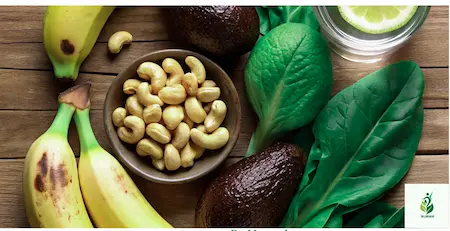Why 90% Fail at Intermittent Fasting: Avoid These Chart Mistakes follow 5 Easy Steps to Faster Results
Updated: October 18, 2025

Looking for the easiest way to shed pounds? Discover the top 5 beginner-friendly intermittent fasting strategies that can help you lose weight quickly, safely, and sustainably — no complicated diets required.
How to start Intermittent fasting for weight loss
If you are new to fasting, this beginner’s guide will show you how to start Intermittent fasting for weight loss in simple 5 step format . You’ll discover in these five easy, practical ways to incorporate intermittent fasting into your life, with tips to stay safe and steady along the way.
Table of Contents
1. The 16/8 Fasting Method — Simple & Effective for Beginners
The 16/8 method is one of the most popular and easiest fasting schedules to get started with. It involves fasting for 16 hours each day and eating only during an 8-hour window, such as between 12 PM and 8 PM.

Why it works: It naturally reduces your calorie intake and helps stabilize blood sugar levels. Many people report increased energy, mental clarity, and better fat-burning during this routine.
How to start: Choose your preferred 8-hour window, stick to it consistently, and eat nourishing, balanced meals within that timeframe.
2. The 12/12 Fasting Method — The Gentle Start for Complete Biginners
If 16/8 feels too intimidating, then the 12/12 method is the perfect gentle introduction to intermittent fasting. It involves eating for 12 hours, then fasting for 12 hours—for example, eating from 8 AM to 8 PM.

Benefits: This routine is less restrictive and easier to maintain, helping your body adapt gradually. It’s especially good if you’re new to fasting or have a sensitive blood sugar balance.
Tip: Start by maintaining your current eating habits and gradually shift your schedule to fit the 12/12 window.
3. Say Goodbye to Late-Night Snacking — Support Fat Loss & Digestion
Late-night snacking is a major obstacle for many trying to lose weight. Fasting early in the evening (around 6–7 PM) not only helps eliminate these extra calories but also gives your digestion a much-needed break.

Practical tip: Brush your teeth early in the evening—this signals to your brain that the kitchen is closed, making late-night munching less tempting.
Result: This small habit can significantly boost your fat-burning ability overnight and help reduce belly fat over time.
4. Do It Gradually — Listen to Your Body & Build Sustainable Habits
Jumping into a strict fasting routine can be overwhelming and counterproductive. Instead, start slow. Gradually reduce your number of meals or shorten your eating window as your body adapts.
Why it’s important: This approach minimizes blood sugar dips, irritability, and fatigue, making fasting a sustainable lifestyle change. Always listen to your body—if you feel dizzy or overly tired, ease up and give yourself time to adjust.

Pro tip: Track your progress, pay attention to how you feel, and celebrate small victories along the way.
5. Get Extra Sleep — Support Your Fasting & Fat Loss Goals
Lack of sleep hampers your weight loss efforts. When you’re sleep-deprived, cortisol—the stress hormone—spikes, which in turn raises insulin levels. Elevated insulin prevents your body from burning fat effectively.

Aim: Prioritize 7-8 hours of quality sleep every night. If you need a quick nap during the day, go for it. Rest helps regulate hormones, reduces stress, and speeds up your fat-loss results.
6. Add HIIT — Maximize Fat Burning with Short, Intense Workouts
High-Intensity Interval Training (HIIT) is a time-efficient workout that involves alternating between short bursts of intense activity and recovery periods. It is one of the best ways to boost growth hormone, accelerate fat loss, and improve overall fitness.
How often: Aim for 3-4 sessions per week. Even 20-30 minutes of HIIT can make a big difference, especially when combined with intermittent fasting.
Tip: Choose exercises like sprints, jump squats, or cycling, and keep rest periods short.

7. Eat Clean During Your Eating Window — Support Your Fasting Results
What you eat matters just as much as when you eat. Focus on whole, nutrient-dense foods during your eating window:
·Plenty of vegetables
·Lean proteins
·Healthy fats like avocados and nuts
·Minimizing processed foods and added sugars
Hydration tip: Drink plenty of water, herbal teas, and lemon water to stay hydrated and curb hunger.
Bonus: 5 Tricks to Accelerate Your Fasting & Fat Loss Results
1. Focus on Potassium-Rich Foods
Including potassium-rich foods like leafy greens, bananas, and mushrooms helps regulate insulin levels, making your fat-burning process more efficient.

2. Practice Mindful Eating & Avoid Overeating
Use smaller plates, chew slowly, and listen to your body’s hunger cues to prevent calorie over consumption during your eating window.

3. Stay consistent & patient
Results don’t happen overnight. Stick with your routines, track your progress, and celebrate your patience.
4. Keep Hydrated & Limit Sugary Drinks
Water, herbal teas, and infused water are your best friends. Avoid sodas and artificial beverages that can sabotage your progress.

5. Consider Supportive Supplements Wise
Some supplements like electrolytes or magnesium can help during longer fasting periods. Always consult a healthcare professional before starting new supplements.
Conclusion: Your Path to Sustainable, Healthy Weight Loss Starts Today!
Intermittent fasting isn’t about deprivation—it’s about creating a manageable, sustainable lifestyle that promotes fat loss and improves health. Start with small steps, stay consistent, and listen to your body. Ready to try these tips? Share your progress and questions—your journey to a healthier you begins now!
FAQ,s
Q1: Is intermittent fasting safe for everyone?
A: No, it’s not suitable for pregnant women, medical conditions, or those with eating disorders. Consult your doctor first.
Q2: How long should I fast to see results?
A: Most notice changes within a few weeks; consistency and patience are key for sustainable results.
Q3: Can I drink coffee or tea while fasting?
A: Yes, black coffee and herbal teas are fine, but avoid added sugar or milk that break your fast.
Q4: What should I eat during my eating window?
A: Focus on whole foods like vegetables, lean proteins, and healthy fats; limit processed snacks.
Q5: Why am I not losing weight despite fasting?
A: Possible reasons include overeating, hidden calories, stress, or inconsistent fasting habits.
Q6: How do I handle hunger and cravings while fasting?
A: Drink water or herbal tea, and stay busy; eating enough during your window also helps control cravings.
Q7: How can I make intermittent fasting easier to stick with?
A: Start slow, choose a fitting schedule, and plan meals ahead for smoother, sustainable fasting.
Q8: Will I lose muscle mass while fasting?
A: Not if you consume enough protein and incorporate resistance exercises into your routine.
Q9: How does intermittent fasting affect energy levels?
A: Many experience increased focus, but initial days may include hunger; it gets better with time.
Q10: Can I do intermittent fasting while exercising?
A: Yes, either fast or during eating, but adjust intensity and hydrate well for safe, effective workouts.





